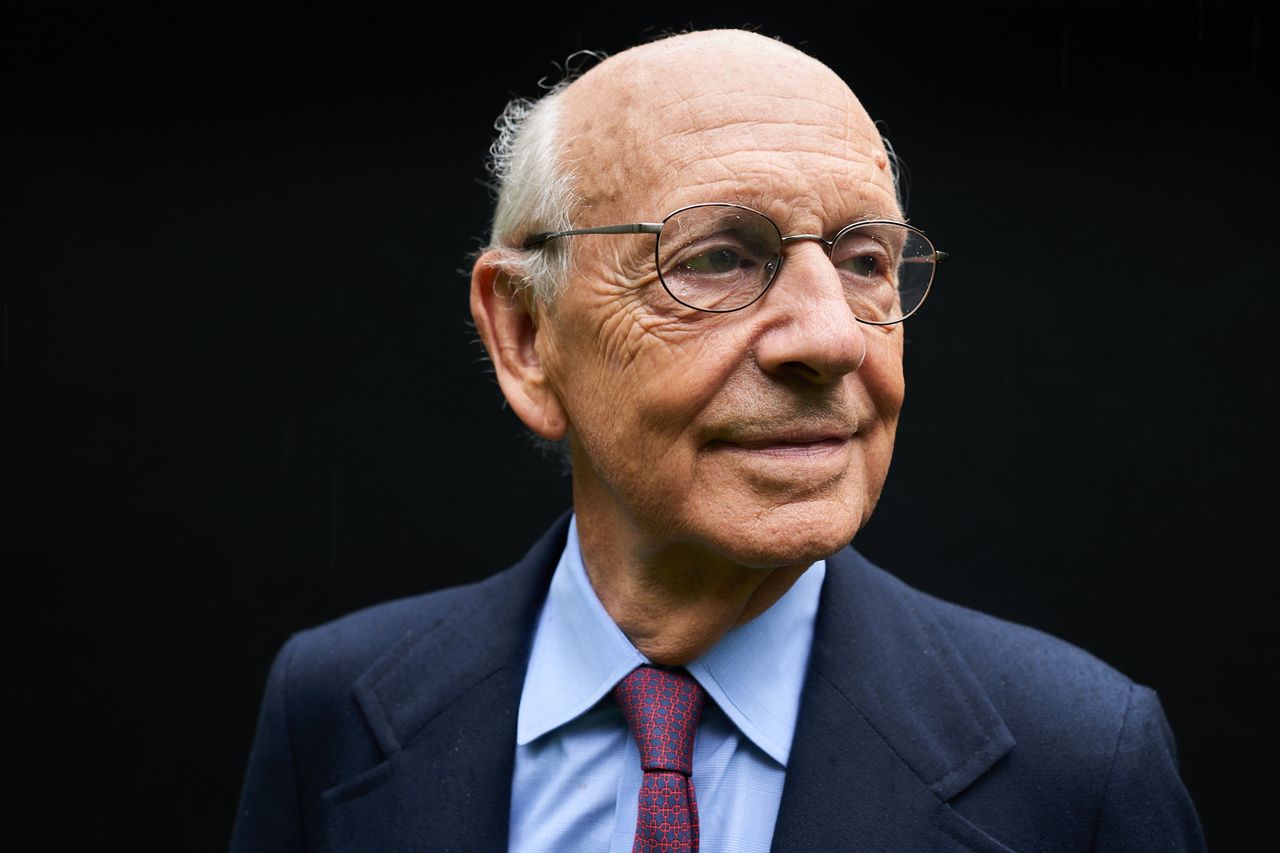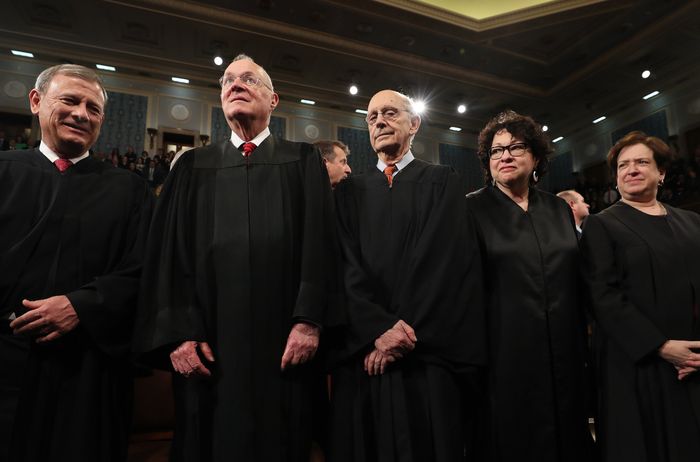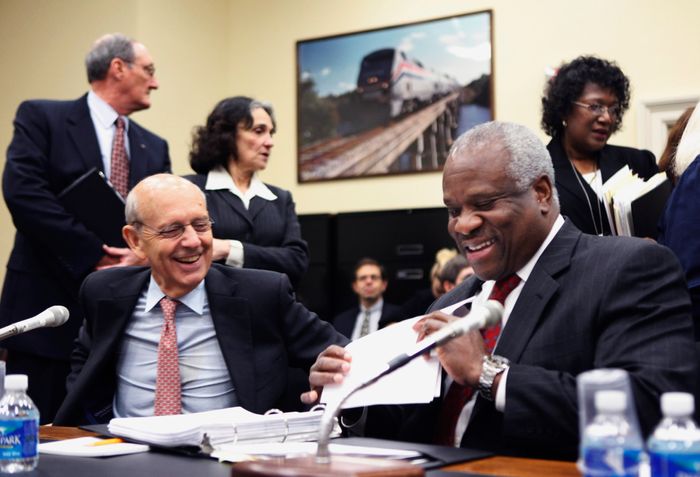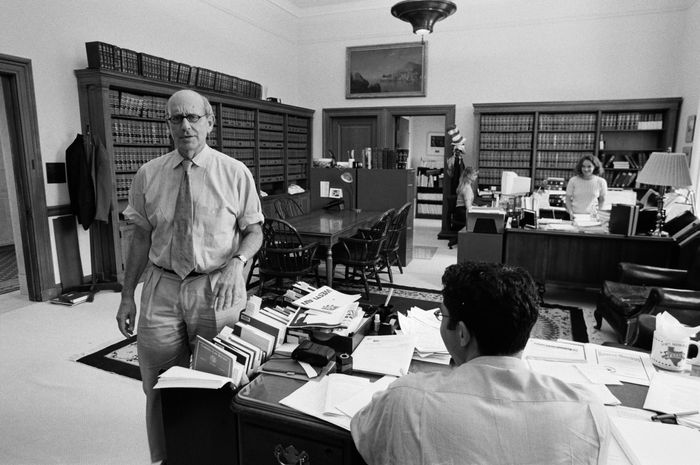
This article is more than
3 year old
WASHINGTON—Justice Stephen Breyer plans to retire at the end of the current Supreme Court term, giving President Biden an opportunity to shore up the court’s liberal wing for decades to come and deliver on his promise to nominate the court’s first Black woman.
The justice’s intention was confirmed by Senate Majority Leader Chuck Schumer and two other people familiar with the matter. Senate Democrats said they would move quickly to fill the vacancy created by the 83-year-old Justice Breyer, a 1994 Clinton appointee.
“President Biden’s nominee will receive a prompt hearing in the Senate Judiciary Committee, and will be considered and confirmed by the full United States Senate with all deliberate speed,” Mr. Schumer said.
The justice’s plans have been a focus of Democratic concern since the September 2020 death of Justice Ruth Bader Ginsburg allowed Republicans to replace a liberal stalwart with a young conservative, Justice Amy Coney Barrett. The GOP move, over vigorous Democratic protest, cemented a solid 6-3 conservative majority just before Democrats recaptured the power to appoint and confirm justices with a victory in the presidential election and a majority in the Senate.
Justice Breyer is the court’s oldest member, and some liberals have called for him to step down while Mr. Biden can appoint a like-minded jurist. The departure is more likely to preserve than alter the court’s ideological balance, and Justice Breyer will still have a say in this term’s decision on the most significant abortion case to come before the court in decades. The justices could limit or overrule the court’s 1973 decision in Roe v. Wade establishing a woman’s right to terminate an unwanted pregnancy.
But the confirmation process for his successor is sure to play out in the context of the sharp political battle dividing Democrats and Republics, both in the Senate charged with confirming a new justice and in a nation that has come to see the Supreme Court in increasingly partisan terms.
With 50 members and Vice President Kamala Harris casting a tiebreaking vote, Senate Democrats have the numbers to confirm a new justice if they stay together. While the contentious hearings for the three conservative justices picked by President Donald Trump set a standard for intensity that would likely test Democrats’ unity, hearings in the coming months could also prove to be a rallying point for a majority party that has failed to come together on key aspects of President Biden’s legislative agenda.

NBC News earlier reported Justice Breyer’s plans.
Mr. Biden declined to comment on Justice Breyer’s retirement.
White House press secretary Jen Psaki said Mr. Biden “has stated and reiterated his commitment to nominating a Black woman to the Supreme Court and certainly stands by that.”
The Supreme Court spokeswoman had no comment. A formal announcement of Justice Breyer’s plans was expected by Thursday.
Recent months have seen the conservative majority prevail over the objections of Justice Breyer and others liberals on the court, including this week’s announcement that in its next term the court would review precedents permitting affirmative action in college admissions.
The list of possible nominees is expected to include a number of prominent Black jurists, among them Judge Ketanji Brown Jackson, 51, a judge on the Court of Appeals for the District of Columbia Circuit and former Breyer clerk; Leondra Kruger, 45, a justice on the California Supreme Court; Julianna Michelle Childs, 55, a federal judge in South Carolina who has been nominated by Mr. Biden to the D.C. Circuit appeals court; Judge Candace Rae Jackson-Akiwumi, who joined the Seventh U.S. Circuit Court of Appeals in Chicago months ago; and Judge Eunice Cheryl Lee, who has served on a federal appeals court in New York since last year.
There are indications that retirement wasn’t an easy choice for Justice Breyer, who has remained an active participant in the court’s proceedings and maintained a vigorous public schedule, writing books and speaking to legal organizations and student groups. Justice Breyer hasn’t made public any particular health issues.

Justice Breyer has championed the court’s independence from politics and spoken out against proposals by some Democrats to dilute conservative power by expanding the court with additional seats Mr. Biden could fill. The public campaign pushing Justice Breyer to go may have increased his reluctance to step down, for fear of suggesting that strategic objectives, rather than personal considerations, motivated his decision.
Still, months of sometimes strident demands from the left—one pressure group hired a billboard truck to drive around Capitol Hill with the message, “Breyer, retire”—didn’t go unnoticed.
“It isn’t really true that I was born on Pluto and don’t know what’s going on in the world. I think I do,” he told The Wall Street Journal in a September interview.
While liberal power has declined since Justice Ginsburg’s death, Justice Breyer’s influence has grown as he has assumed de facto leadership of the court’s liberal wing, which also includes Obama appointees Sonia Sotomayor and Elena Kagan. Under the institution’s customs of seniority, Justice Breyer assigns the lead dissent in ideologically divided cases. In the rare event that he votes in the majority over the dissent of Chief Justice John Roberts and the senior associate justice, Clarence Thomas, he assigns the opinion of the court itself.
That seniority gave him the chance to write some prominent majority opinions in the 2020-21 term, rejecting a Texas-led challenge to the Affordable Care Act; upholding as fair use Google’s replication of code copyrighted by Oracle Corp. ; and limiting the power of school administrators to police student expression off campus.
But this term, Justice Breyer’s approach appeared increasingly beside the point to a confident conservative supermajority of 6-3. Over liberal objections, the court quickly killed Biden administration initiatives to combat the Covid-19 pandemic, such as a workplace vaccination-or-test requirement and an eviction moratorium for renters, and assembled a docket fulfilling many longstanding conservative objectives, including cases that could expand access to guns, curb federal environmental protections and limit the power of independent agencies such as the Federal Trade Commission.
Known as a pragmatic and consensus-oriented jurist, Justice Breyer appeared to recognize the diminished power the court’s liberals now possess. Rather than rant against the prevailing winds, he initially sought compromise with Chief Justice Roberts and other conservatives willing to give him a seat at the table.
Over his tenure, that approach bore fruit. Last year, for instance, he helped moderate the court’s decision that Catholic Social Services was entitled to a carve-out from a nondiscrimination clause in its foster-parent screening contract with the city of Philadelphia, allowing it to turn away same-sex couples without forgoing taxpayer funds. Liberals joined Chief Justice Roberts’s six-justice majority opinion that gave the religious organization a win without breaking much ground in legal doctrine; three more conservative justices would have gone further, overruling a 1990 precedent that generally disallows religious exemptions from across-the-board laws.
That result echoed a watershed Affordable Care Act decision in 2012. Justice Breyer, along with Justice Kagan, joined Chief Justice Roberts’s opinion invalidating a provision of the law requiring states to choose between expanding eligibility for Medicaid or withdrawing entirely from the joint federal-state program that provides health insurance for the poor. The chief justice, in turn, joined the four liberals then on the court to uphold the rest of the healthcare overhaul, preserving President Barack Obama’s signature legislative achievement.
As a public figure, Justice Breyer spent much of his Supreme Court tenure in Justice Ginsburg’s shadow. She arrived after a tenure on the powerful U.S. Court of Appeals for the District of Columbia Circuit as an advocate renowned for advancing women’s rights, and was the second woman to serve on the Supreme Court. Justice Breyer’s more conventional profile and professorial manner provided little fodder for a cult of personality. Just before Justice Ginsburg’s death, a Marquette Law School poll found her the most recognized member of the court—and Justice Breyer the least, with 47% of respondents saying they never had heard of him.
Before the coronavirus pandemic shut the Supreme Court building, Justice Breyer often could be seen loping through the corridors, unnoticed by tourists who came to marvel at the marble seat of judicial power. More than once, he and now-retired Justice David Souter recounted being confused for each other.
But on a court of nine outsize characters casting equal votes, Justice Breyer was a distinctive presence, earnest and unpretentious in his personality, aspirational and idealistic in judicial philosophy. At oral arguments, he was known for convoluted and often amusing hypotheticals. By one measure—the appearance of the word “laughter” in court transcripts—he was the funniest of the justices.

In jurisprudence, Justice Breyer sought to offer a coherent and often progressive alternative to originalism and textualism, methods popularized by the late Justice Antonin Scalia that emphasize the literal meaning of legal documents when they were adopted. Rejecting a formalism he believed missed the forest for the trees, Justice Breyer sought to construe legal texts in ways that furthered their authors’ purpose, whether an environmental statute that sought to clean the air or a constitutional provision intended to promote democratic self-government. Speaking to reporters after his 1994 nomination, Justice Breyer said he expected his role on the court would be “to make the average person’s ordinary life better.”
“I think Justice Breyer’s big-picture contribution has been to serve as a counterpoint to Justice Scalia and others by emphasizing that when it comes to legal reasoning, the consequences matter, and the human beings affected by judicial rulings matter,” said U.S. District Judge Vince Chhabria, a former Breyer clerk.
Justice Breyer attended Stanford University and Harvard Law School, as well as Oxford as a Marshall Scholar. He clerked for Justice Arthur Goldberg in the 1964-65 term, and went on to become a prominent scholar at Harvard Law School. He took breaks from academia to work for the Watergate special prosecutor and the Senate Judiciary Committee, whose onetime chairman, Sen. Edward M. Kennedy (D., Mass.), promoted him for the bench.
While some liberals fretted Justice Breyer would prove a pro-business technocrat, he enjoyed bipartisan support and was overwhelmingly confirmed to the federal appeals court in Boston in 1980 before elevation to the Supreme Court.
While chief judge in Boston, Justice Breyer oversaw construction of a new courthouse on the waterfront, one he intended to be welcoming to the average citizen rather than cold and off-putting. Its grounds include an inscription attributed to Justice Breyer: “The most beautiful site in Boston does not belong to the judges, it does not belong to the lawyers, it does not belong to the Federal Government, it belongs to the public.”
—Sabrina Siddiqui, Eliza Collins and Natalie Andrews contributed to this article.